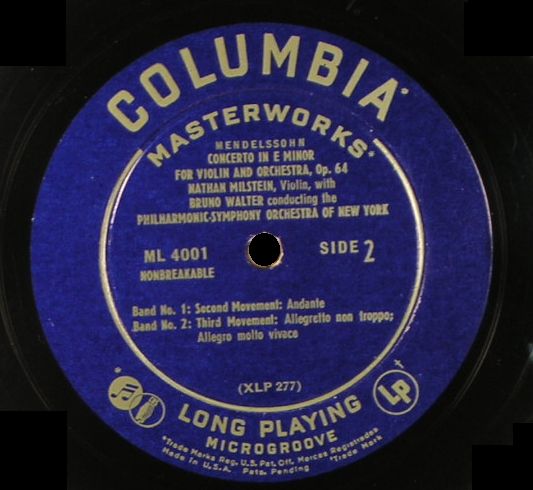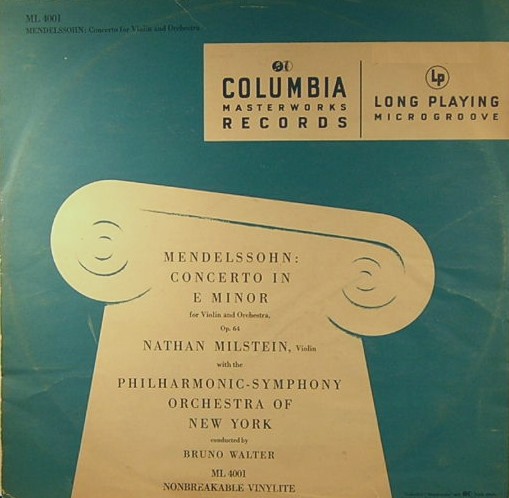
Columbia ML4001, Mendelssohn Violin Concerto in E Minor, Nathan Milstein Violin, Bruno Walter conducting the Philharmonic Symphony Orchestra of New York, Recorded: May 16, 1945, Carnegie Hall, New York City.; Original 78 rpm release: set M-577 (mx XCO 34739 -- XCO 34708). Original LP release: ML 4001; Session producer: Goddard Lieberson; Originally Released 1945; Mono recording, Bruno Walter Edition, SMK 64459
ML4001 was mastered direct-to-disc on 16-inch lacquer. By 1949 magnetic tape was used for mastering.
The following is an extract from the Sony website (a few years ago): A Brief History of the Sony Classical Label. This page has evidently been removed from the Sony website.
"In 1948, Columbia gained a formidable edge on its competitors with the introduction of long-playing 33-1/3 rpm records (in 10" and 12" formats), establishing a new industry standard that would hold for almost 40 years. The first 12" recording, released on June 28, 1948, and selling at a premium price of $4.85, featured violinist Nathan Milstein in the Mendelssohn Concerto in E minor with Bruno Walter conducting the Philharmonic Symphony Orchestra of New York; the first 10" 33-1/3 recording (selling for $3.85) featured Walter conducting Beethoven's Symphony No. 8."
Billboard Magazine July 3, 1948 published the entire first release of Columbia Microgroove recordings. ML2001, Beethoven's 8th, is number one in the list of 10-inch classical recordings.
